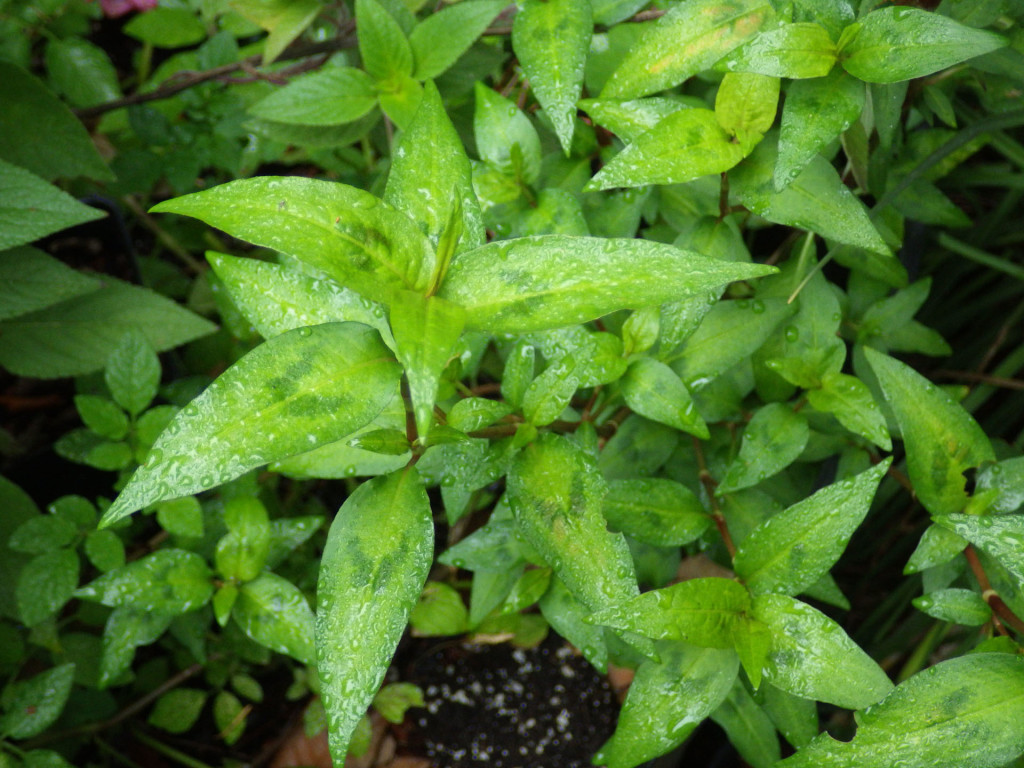AKA “Vietnamese Cilantro”
Polygonum odoratum Lour. — renamed Persicaria odorata (Lour.) Soják
Fresh leaves and young stems are used fresh.
Many common names can be encountered online:
Cambodian: Chi krasang tomhom, Chi pong tea koun
Chinese: 香蓼
Chinese [Cantonese]: 越南香菜 (Yuht nàahm hēung choi), also 喇沙葉 (Lāak sāa yihp) [Singapore Cantonese])
Chinese [Mandarin]: 越南香菜 (Yuè nán xiāng cài), 喇沙葉 (Lā shā yè)
Czech: Kokořík vonný
Danish: Vietnamesisk Koriander
English: Asian mint, Cambodian mint, Hot mint, Kesum, Laksa plant, Perennial coriander, Smartweed, Vietnamese coriander, Vietnamese cilantro, Vietnamese mint (this last common name is shared with Kinh Gioi: Elsholtzia ciliata)
French: Coriandre du Vietnam, Persicaire du Vietnam, Renouée odorante
German: Vietnamesischer Koriander, Wohlriechender Knöterich
Hmong: Luam laws
Hungarian: Vietnámi menta
Khmer: Chi krassang tomhom, Xang-hum
Lao: Phak phew/Phak phaew/Phak pheo
Malay: Dawn laksa/Daun laksa, Dawn kesum/Daun kesom [Singapore]
Manipuri [Meitei-Lon]: Phakpai/Phak-Pai
Portuguese: Hortelã-vietnamita
Russian: Купена лекарственная (Kupiena lekarstvennaya), Горец ароматный (Gomets aromatny)
Singapore: Daun kesom, Laksa herb, Laksa leaves, Laksa plant, Laksa yip
Spanish: Culatro de Vietnam, Culatro
Thai: จันทร์โฉม (Chan chom), หอมจันทน์ (Hom chan) [Ayutthaya], ผักไผ่ (Phak phai/Pak pai/Phak pai), พริกม้า (Phrik ma) [Northeastern Thailand], Pa pao
Vietnamese: Rau Râm
